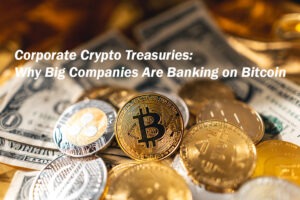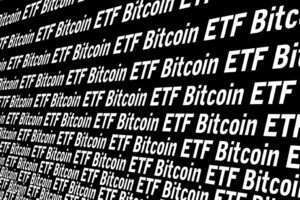2024 has seen major institutional players, including hedge funds, banks, and pension funds, show a growing appetite for spot Bitcoin ETFs. This trend cements the significance of the shift and the wider acceptance of Cryptocurrency investments among investors.
Big players like Morgan Stanley have invested heavily in the Cryptocurrency market. This shift is happening now, even though these types of investments weren’t their preference before. In the past, they generally avoided this approach. Morgan Stanley purchased the Grayscale Bitcoin Trust ETF (GBTC) for $270 million (£212 million). This comes at a time when over $17 billion (£13.36 billion) in withdrawals were realised since the launch of spot Bitcoin ETFs in January. This showcases why are banks hedge funds and pensions buying spot Bitcoin ETFs. Because of its expensive management fees, GBTC continues to be the largest spot in the Bitcoin ETF.
Typically, not only banks pursue this trending investment. Hedge funds like Steven Cohen’s Point72 Asset Management and Paul Singer’s Elliott Investment Management joined the spot Bitcoin ETFs trend. Millennium Management, led by Israel Englander, also got on board. Market makers like Citadel Securities and Susquehanna International Group actively bought in the first quarter, with Susquehanna holding a massive $1.3 billion (£1.1 bn) in GBTC. Why are banks hedge funds and pensions buying spot Bitcoin ETFs? It’s an intriguing question.
Different Investment Strategies in Cryptocurrency
Sumit Roy, a senior analyst at etf, believes this movement could suggest differing investment approaches. Hedge funds and large banks may each be taking unique paths in cryptocurrency investing. Hedge funds are likely positioning themselves for direct profits from Bitcoin’s market fluctuations. Meanwhile, banks may be buying these ETFs on behalf of their clients.
Roy states, “Since spot bitcoin ETFs are now accessible, institutional investors’ involvement in the space is not surprising, given that Cryptocurrency is a sizable asset class with a value of approximately $2.4 trillion (£1.8 trillion).”
The filings did not clarify whether these investments have been profitable. They lack the exact purchase dates of the securities. These 13F documents provide only a snapshot after the quarter ends. They include the approximate number and value of shares and sometimes other instruments like puts and options.
Pension Funds Join the Bitcoin ETF Trend
It becomes more interesting when you realise the trend has even reached conservative investors such as pension funds. It is reported that entities like the State of Wisconsin Investment Board have also ventured into spot Bitcoin ETFs during the first quarter. This answers partially why are banks hedge funds and pensions buying spot Bitcoin ETFs.
In totality, investor interest in spot Bitcoin ETFs has recovered, with $642 million (£504 million) in new inflows over the last two weeks—a reversal from the previous outflows. The fact that this increase is congruent with a roughly 10% rise in the price of Bitcoin suggests that investor optimism has returned.
More institutional interest in Cryptocurrencies, especially through spot Bitcoin exchange-traded funds (ETFs), indicates a wider acknowledgement and appreciation of the potential of digital assets. The involvement of these big players may open doors for even greater acceptance and integration of Cryptocurrencies into conventional investment portfolios.
Image Source: Adobe Stock
Disclaimer: This article is provided for informational purposes only. It is not offered or intended to be used for legal, tax, investment, financial or other advice.












